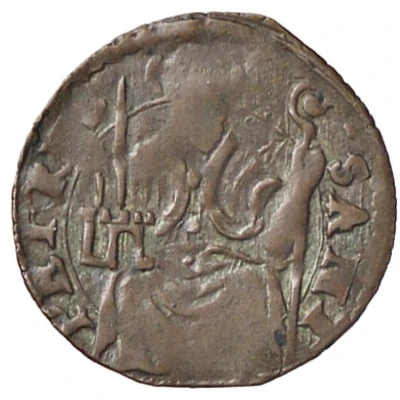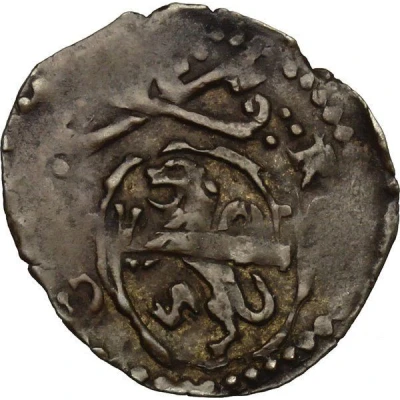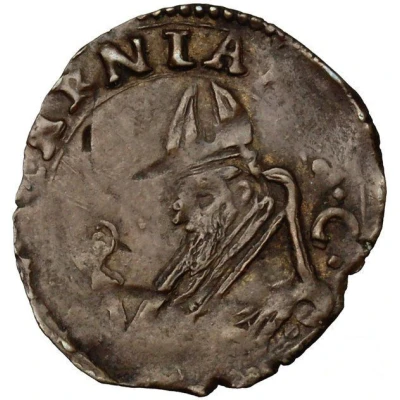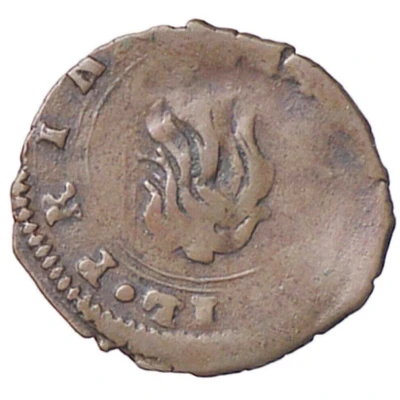


© InAsta
Quattrino - Rodolfo Bologna type ND
| Billon | 0.5 g | 17 mm |
| Issuer | Castiglione Delle Stiviere (Italian States) |
|---|---|
| Marquess | Rodolfo (1586-1593) |
| Type | Standard circulation coin |
| Years | 1586-1593 |
| Value | 1 Quattrino (1⁄60) |
| Currency | Lira |
| Composition | Billon |
| Weight | 0.5 g |
| Diameter | 17 mm |
| Shape | Round (irregular) |
| Technique | Hammered |
| Demonetized | Yes |
| Updated | 2024-10-05 |
| Numista | N#397221 |
|---|---|
| Rarity index | 100% |
Reverse
Seated figure of bishop, facing, holding crozier and model of city.
Script: Latin
Lettering: SANT PETRVS
Translation: Saint Peter
Comment
As with many coins of Castiglione, this one imitates quattrinos of Bologna which had the city name (BONONIA) obverse, and Saint Petronius reverse holding a model of the city with its famous towers.
Interesting fact
One interesting fact about the Quattrino - Rodolfo (Bologna type) ND (1586-1593) from Castiglione Delle Stiviere (Italian States) is that it was made of Billon, a type of alloy that was commonly used in the production of coins during the Renaissance period. Billon is a mixture of silver and other metals, such as copper, tin, or lead, and was used to create a coin that was less expensive to produce than a pure silver coin, but still maintained some of the durability and resistance of silver. The use of Billon in the production of coins like the Quattrino - Rodolfo (Bologna type) ND (1586-1593) reflects the economic and technological advancements of the time, and provides a unique insight into the monetary systems and trade practices of the Italian States during the 16th century.



